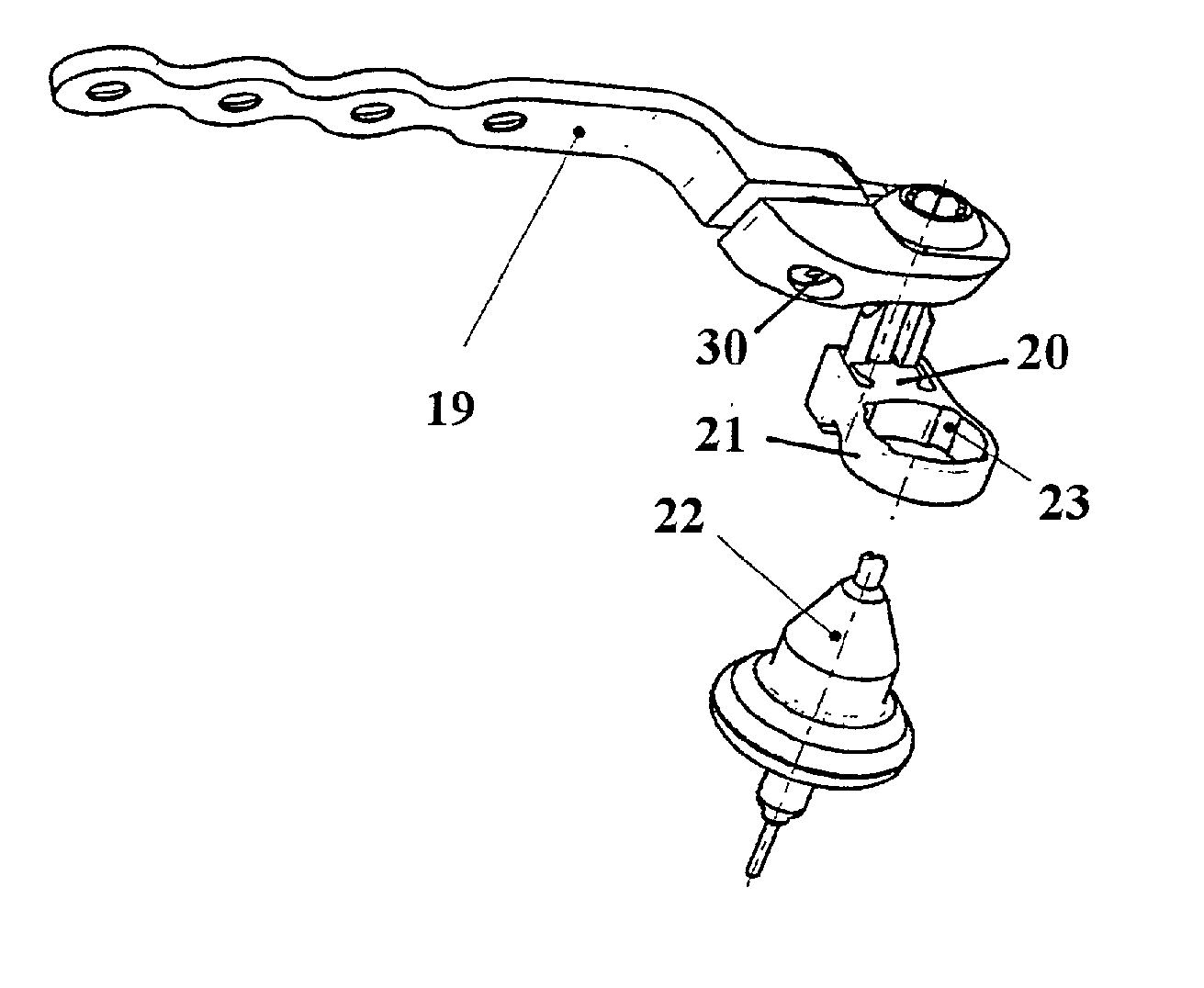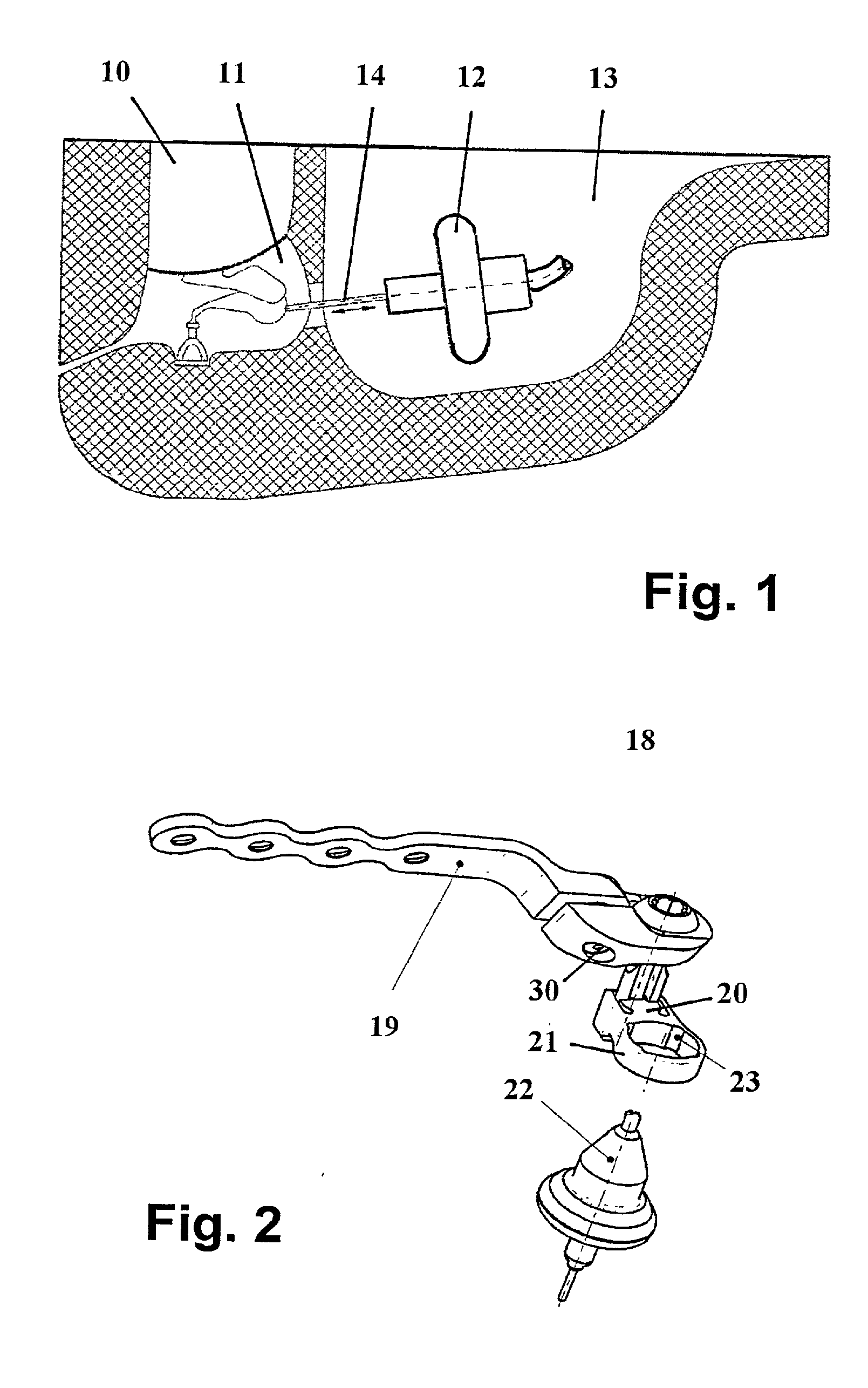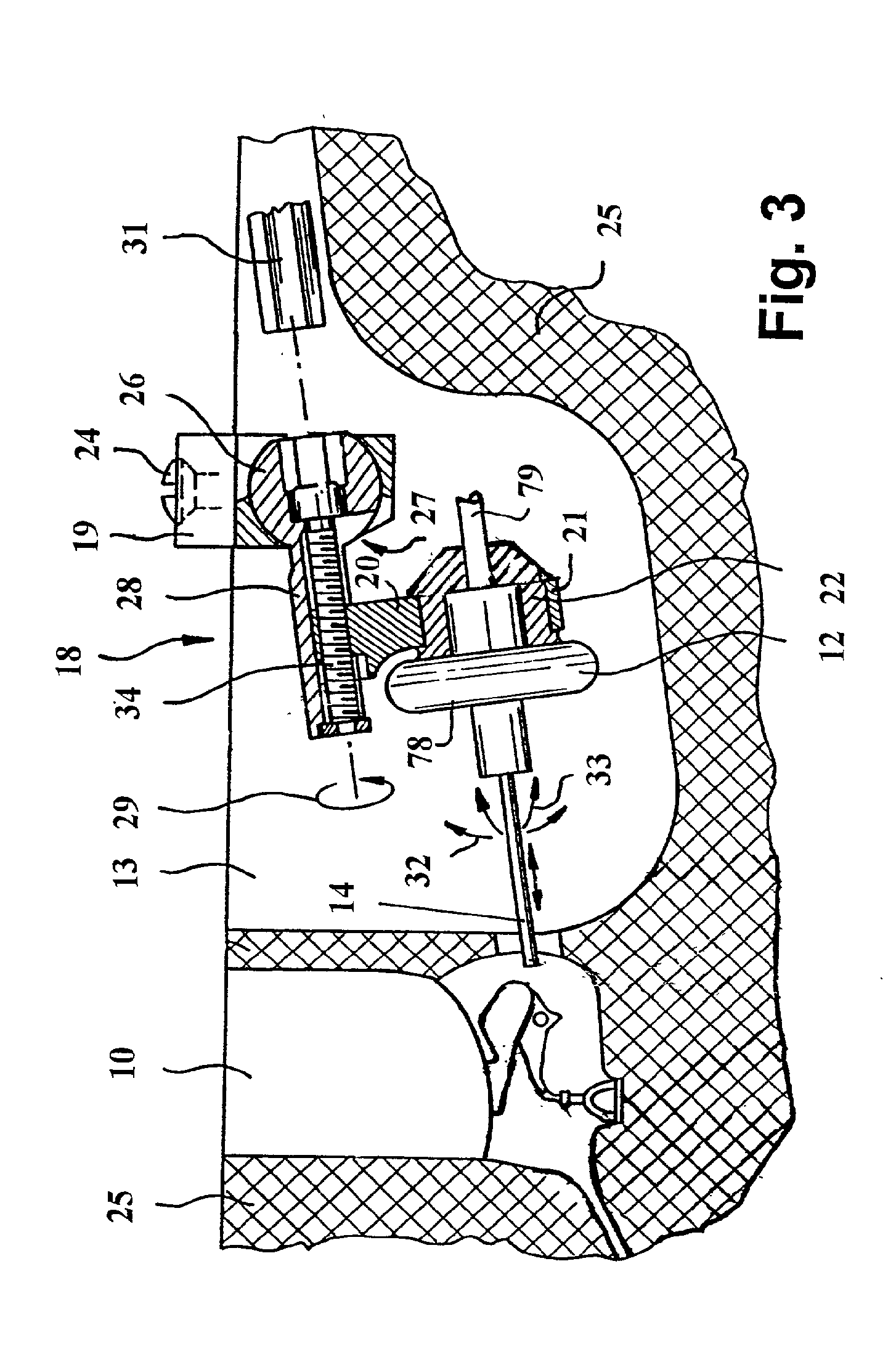At least partially implantable hearing system
a hearing system and implantable technology, applied in the field of at least partially implantable hearing systems, can solve the problems of poor sound quality, visible hearing aids, and basic defects caused by the principle of acoustic amplification, and achieve the effect of simple measures and simple manner
- Summary
- Abstract
- Description
- Claims
- Application Information
AI Technical Summary
Benefits of technology
Problems solved by technology
Method used
Image
Examples
Embodiment Construction
[0047]FIG. 1 shows a schematic sectional view of a human petrous bone including the external auditory canal 10, the middle ear 11 comprising the auditory ossicles malleus, incus and stapes (with the inner ear not being illustrated), and an electromechanical transducer 12 which is disposed in an artificial mastoid cavity 13. The transducer 12, in a manner known per se, is induced to mechanical vibrations, and in this embodiment the transducer 12 transmits such vibrations to the incus via a coupling rod 14 which extends through the natural access aditus ad antrum. The implantable positioning and fixing system (micromanipulator) is not illustrated in FIG. 1.
[0048]FIG. 2 shows an embodiment of an implantable micromanipulator 18 of the type described in detail in commonly owned U.S. patent application Ser. No. 09 / 468,853 which is hereby incorporated by reference. The micromanipulator 18 comprises an osteosynthesis plate 19 which is adapted to be fixed by screws to the cranial vault. Mic...
PUM
 Login to View More
Login to View More Abstract
Description
Claims
Application Information
 Login to View More
Login to View More - R&D
- Intellectual Property
- Life Sciences
- Materials
- Tech Scout
- Unparalleled Data Quality
- Higher Quality Content
- 60% Fewer Hallucinations
Browse by: Latest US Patents, China's latest patents, Technical Efficacy Thesaurus, Application Domain, Technology Topic, Popular Technical Reports.
© 2025 PatSnap. All rights reserved.Legal|Privacy policy|Modern Slavery Act Transparency Statement|Sitemap|About US| Contact US: help@patsnap.com



